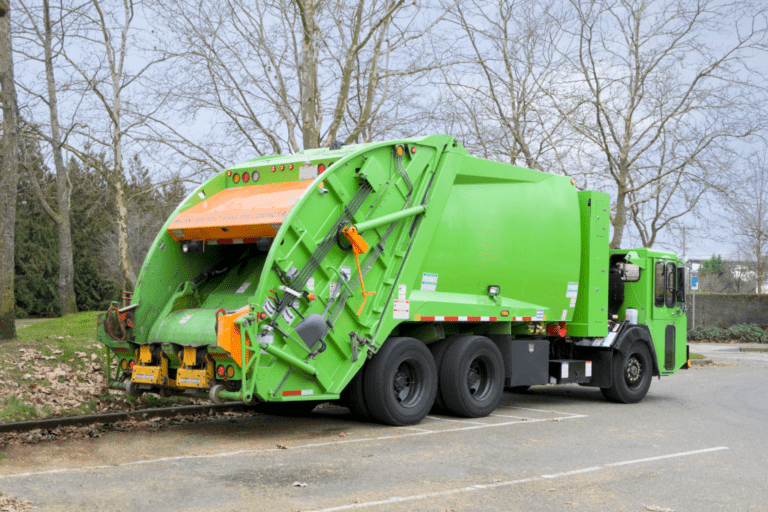When operating a fleet, regular inspections for fleet vehicles need to be conducted thoroughly and in compliance with Federal Motor Carrier Safety Administration (FMCSA). In order for optimal driver and vehicle safety, drivers are accountable for conducting driver-vehicle inspection reports. Drivers must be well educated on how to examine for fleet vehicle defects and must be reliable to conduct DVIR inspections with integrity. With the assistance of digital tools such as fleet maintenance software, drivers can be held accountable for DVIR inspections.
The Federal Motor Carrier Safety Administration (FMCSA) Compliance
The Federal Motor Carrier Safety Administration creates and enforces regulations to prevent accidents in commercial vehicles. The goal of the FMCSA is to reduce and eliminate the number of crashes, injuries, and fatalities in large vehicles and commercial trucks. All commercial vehicles and fleet companies must comply with laws and regulations enforced by the FMCSA.
Drug and Alcohol Testing
First, and most importantly, fleet owners and managers need to hire adequate and responsible drivers. Driving under the influence is hazardous for anyone on the road, and will likely result in a fatal crash. Carriers are responsible for their drivers while employees are on the job and have a duty of care owed to others on the road. Part of that duty requires safety awareness, prioritizing safe driving as a part of work culture, and sober drivers.
Intoxication affects a drivers decision making, coordination, and slows a driver’s reaction time. The best way for fleet owners, managers, and drivers is to pay attention to the other fleet driver’s behavior. Reporting a driver who is under the influence may not only save their life but save the lives of other innocent drivers or passengers.
When drug and alcohol tests are required:
- After fatal accidents
- Accidents resulting in serious injuries
- Reasonable suspicion
- Must participate in random drug testing
- Drivers who test positive must be removed from duties for 24 hours
Drowsy and Distracted Driving
Driving under the influence is a clear violation of driver safety regulations but drowsy and distracted driving can be just as harmful. Drowsy driving occurs most frequently in the early morning hours between 12:00 and 6:00 am as well as late afternoon. To meet FMCSA requirements, drivers must have 10 consecutive hours of off time before duty with 11 maximum hours behind the wheel at any given point
Driver Vehicle Inspection Report (DVIR)
A Driver Vehicle Inspection Report (DVIR) is an inspection report required by the FMCSA for drivers to complete after a day’s work or shift and file when a defect is detected. If a defect is detected the next driver of the vehicle must also be aware of the diagnostic and that the vehicle has been repaired the reviewing driver of the defective DVIR must also sign off that they are satisfied the repairs have been made or the vehicle is in safe operating condition.
A DVIR must be completed for every commercial motor vehicle with defaults before operations. So, if one driver drives two different fleet vehicles that driver must complete two DVIRs – one for each vehicle. If two drivers are in one vehicle only one DVIR needs to be completed under the condition that the drivers agree to the condition of the vehicle.
Customization
A DVIR has several aspects that are mandatory to meet FMCSA compliance requirements, which include the date, vehicle identification, and required signatures. As long as those requirements are met companies often customize the DVIR process to meet additional safety requirements for the company. For example, the DVIR could include cargo tie-downs or detailed conditions of the equipment which is made easy when using a digital DVIR solution.
Parts and Accessories Required for a DVIR
To stay compliant with the FMCSA all required parts and accessories must be evaluated by the driver before the trip. Suppose the driver is uncomfortable with the condition of any parts or accessories. The defect must be reported and resolved before that fleet vehicle ever hits the road.
- Service brakes, including trailer brake connections
- Parking (hand) brake
- Steering mechanism
- Lighting devices and reflectors
- Tires
- Horn
- Windshield wipers
- Rear-vision mirrors
- Coupling devices
- Wheels and rims
- Emergency equipment
DVIR Signatures
DVIR signatures are compulsory for a completed report. There are three signatures required to close the loop on a defective DVIR. The first signature must be from the driver who conducted the inspection. If the driver is uncomfortable with the condition of the vehicle the driver must file the report and get a second signature from the mechanic or the person who worked on the fleet vehicle. The last signature will need to be the next driver of that vehicle known as the reviewing driver who must acknowledge the repairs have been completed or agree that the repairs were not necessary and the vehicle is safe to drive.
Pre-Trip Inspection Checklist
Pre-trip inspections are essential for vehicle, driver, and cargo safety but the FMCSA also requires pre-trip inspections. The pre-trip requires an inspection of the vehicle and importantly the review of any defective DVIR reports from the prior day.
Failure to comply can lead to expensive fines ranging from $1,270 to $15,420. Conducting thorough inspections is critical in the fleet industry. When filing the report integrity is indispensable. Falsifying records or neglecting maintenance is a crime that not only has financial penalties but could lead to serious injury or fatality.
Pre-Trip Inspection Checklist:
- Odometer
- Mirrors
- Seatbelts
- Wipers
- Heater
- Defroster
- Turn signal lights
- Brake lights
- Four-way flashers
- Highbeam lights
- Emergency equipment
- Hood and doors
- Windshield
- Steps
- Fuel tank
- Leaks
- Leans
- Lights
- Tires
- Rim
- Lug nuts
- Valve stem
- Coolant reservoir
- Power steer reservoir
- Oil
- Alternator
- Water pump
- Air compressor
- Steering shaft
- Power steering box
- Drag Link
- Pitman arm
- Upper arms
- Lower arms
- Tie rods
- Suspension
- Spring mounts
- Leaf springs
- Shock absorber
- U-bolts
- Air hose to brake chamber
- Brake chamber
- Slack Adjustor
- Brake pads
- Brake drums
Tie Down Inspection
Driving a vehicle with loose cargo is terrifying for both the driver and innocent drivers on the road. Loose cargo can be avoided by following FMCSA compliance regulations on tying down cargo.
Meeting Compliance
- Straps must be adjustable so that the driver can tighten straps.
- Tie-downs must not contain knots
- Tie-down repairs must match FMCSA standards or manufacturer standards
- Cargo must be fastened in accordance with the Work Load Limit (WII).
- Cargo must not become loose or unsecured during transit.
- Edge protection must be used to prevent tie-downs from breaking.
Tie Down Checklist
- Loose or Broken Chains
- Check chain links with a monitor
- Number of Tie-downs (10,000 pounds: one tie-down in the back and another in the front)
- Flags and lights (typically required at night)
- Work Load Limit (WLL) (Straps must support at least half the weight of the cargo)
- Anchor Points
Human error is inevitable, there is no way around mistakes. However, there are tools and behaviors that can minimize human error, as well as technology that can eliminate most errors. Checklists, workplace culture, and safety awareness are steps toward restricting errors. Fleet maintenance software and digitalized reports eliminate errors and increase driver accountability. Whip Around is a fleet maintenance service that will assist with digitalized reporting and inspections, and ensure FMCSA compliance. Managing and tracking pre/post-trip inspections is possible with Whip Around Software.









